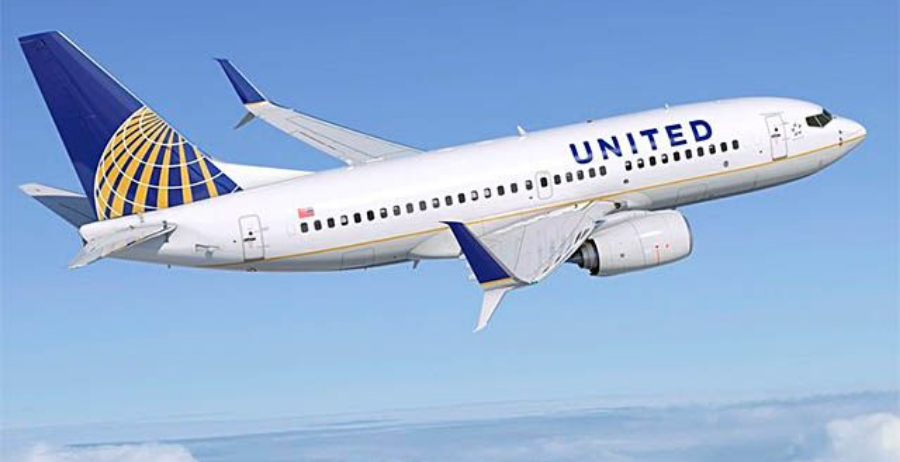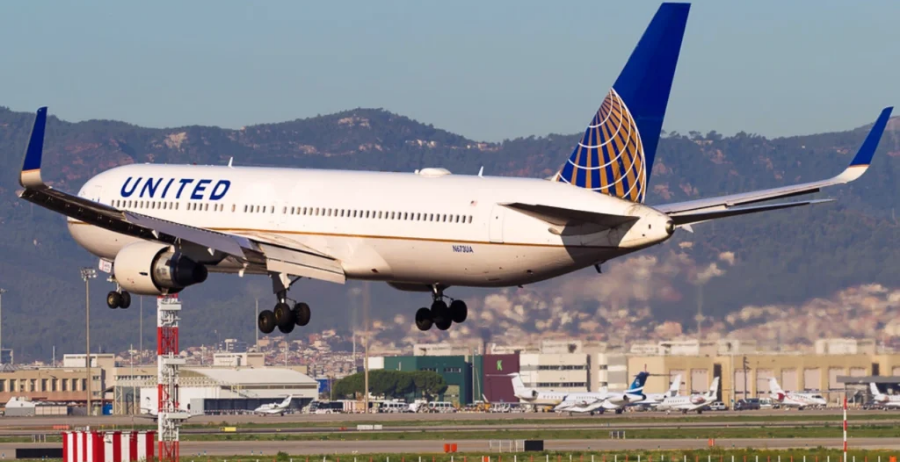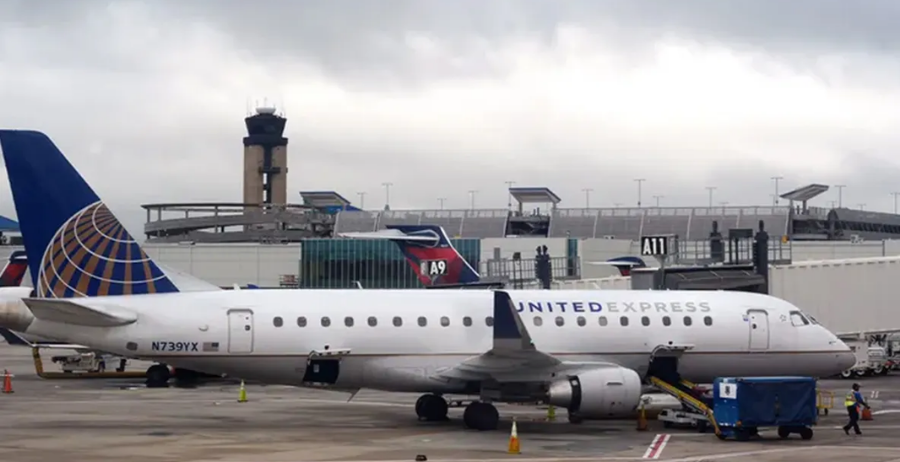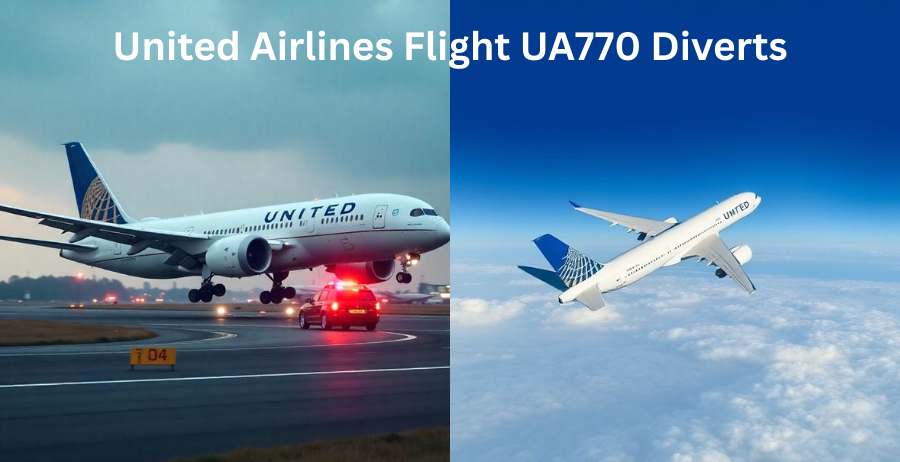On 27 May 2025, United Airlines Flight UA770 from Barcelona to Chicago diverted to London Heathrow after pilots declared a “squawk 7700” emergency. The Boeing 787-9 landed safely at 4:55 p.m., with emergency crews on standby.
Authorities confirmed United Airlines Flight UA770 Emergency Diversion was precautionary after onboard systems signaled an irregularity. Passengers remained safe, and the crew reassured everyone throughout the flight. The incident highlighted both the importance of swift decision-making and the safety measures built into modern aviation.
Flight UA770: Scheduled Journey and What Happened?

For the first stretch of the flight, everything appeared normal as the aircraft climbed steadily to cruising altitude.
- About 90 minutes into the journey, while flying at roughly 37,000 feet. The cockpit received an irregular reading linked to the cabin pressurization system.
- The crew followed protocol and declared a general emergency by setting the transponder to code 7700. This alerts all nearby air traffic control centers to priorities the aircraft.
- After reviewing the situation, the pilots opted to divert to London Heathrow. This is one of Europe’s most capable airports for handling wide-body aircraft in emergency conditions.
This decision aligned with standard aviation practice: landing at the nearest suitable airport to ensure the safety of passengers and crew.
Diversion to London Heathrow
Controllers quickly cleared the flight to divert to London Heathrow, the nearest major international airport equipped to handle wide-body jets. The approach was arranged to minimize delay, with emergency services positioned around the runway as a precaution. At 4:55 p.m. local time, the aircraft made a safe landing on Runway 27R. Passengers reported a smooth touchdown with no visible signs of panic inside the cabin.
Causes of the Diversion

The exact cause of Flight UA770’s diversion remains under investigation. But there are early indications of a possible technical irregularity, such as a mechanical fault or system alert. In such cases, airlines and regulators conduct detailed inspections. These inspections confirm the root cause and introduce corrective measures to prevent recurrence.
Passenger & Crew Experience

For those on board Flight UA770, the moment the captain announced a “technical irregularity” was unsettling. Some passengers described a brief silence before the reassurance came: the aircraft would divert as a precaution and safety was the crew’s top priority.
- Several travelers later shared that although anxiety was natural, the calm tone of the captain and flight attendants helped ease fears.
- The crew moved steadily through the cabin, checking seat belts, offering reassurance and answering questions in a composed manner.
- Passengers reported that instructions were clear and consistent which prevented panic from spreading.
One passenger said,
“You could feel the tension at first, but the crew kept us calm. Their professionalism made all the difference.”
The overall atmosphere remained controlled and many noted that the orderly handling of the diversion was a reminder of the training and discipline behind every commercial flight. The professionalism of the cabin crew, combined with steady communication from the flight deck, helped turn what could have been a frightening ordeal into a manageable situation.
Inside the Safety Response
Reports later indicated that a pressurization alert triggered the diversion. This system ensures safe air levels in the cabin, and even minor warnings require immediate action at high altitude.
The pilots and crew followed established procedures, coordinating closely with air traffic control. Emergency services were positioned on the ground ahead of landing and they were ready if needed. The incident demonstrated how aircraft systems, crew training and ground support combine seamlessly to protect passengers when unexpected alerts occur.
United Airlines’ Response & Aftermath

United Airlines confirmed the diversion was a precaution after a sensor alert and assured passengers were never in danger. On arrival at Heathrow, ground teams assisted with rebooking, meal and accommodations where needed. The aircraft was removed from service for inspection before returning to operation.
Airline diversions are not uncommon. For example, Delta Flight DL275 was recently diverted to Los Angeles (LAX) due to unexpected circumstances.
A Note for Flyers: Staying Prepared During Such Diversions
Flights like UA770 make headlines because diversions are unusual, but these events highlight the extensive safety systems and training airlines have in place. Modern aircraft are designed to handle emergencies efficiently and crews are rigorously trained to respond calmly and effectively. Diversions are part of a proactive approach to passenger safety, not a sign that something has gone wrong beyond control. Understanding this can help travelers stay calm and make the experience smoother.
Tips for Travelers During a Diversion
- Always keep in mind that a diversion is preventive, not dangerous.
- Follow crew instructions carefully as their calm guidance helps you to stay safe.
- Keep essential items like medications, water and entertainment accessible to stay comfortable.
- Stay informed by listening to announcements and updates from the crew
- Practice deep breathing or relaxation techniques to manage stress and anxiety.
FAQs:
1. Why Did United Airlines Flight UA770 Divert To London Heathrow?
Flight UA770 diverted after cockpit instruments detected a pressurization alert. The precautionary landing was made at London Heathrow to ensure passenger safety.
2. Was Anyone Injured During The Flight UA770 emergency Diversion?
No injuries were reported. The aircraft landed safely and passengers described the landing as smooth and controlled.
3. What Does “Squawk 7700” Mean In Aviation?
“Squawk 7700” is a universal transponder code used by pilots to declare a general emergency. It alerts all air traffic controllers that the aircraft requires immediate priority handling.
4. What Type Of Aircraft Was Used For Flight UA770?
United Airlines operated the flight with a Boeing 787-9 Dreamliner, registered as N26902.
5. How Did United Airlines Support Passengers After The Diversion?
After landing at Heathrow, United arranged rebooking, meals and accommodations where required. The aircraft was also inspected before being returned to service.
Conclusion
United Airlines Flight UA770’s diversion underscored the strength of aviation safety protocols and crew preparedness. Though the exact cause is still under review, the incident showed how swift action, training, and coordination ensure passenger safety when unexpected challenges arise. It stands as a reminder that while air travel can face sudden disruptions, the systems in place are designed to protect lives first.
